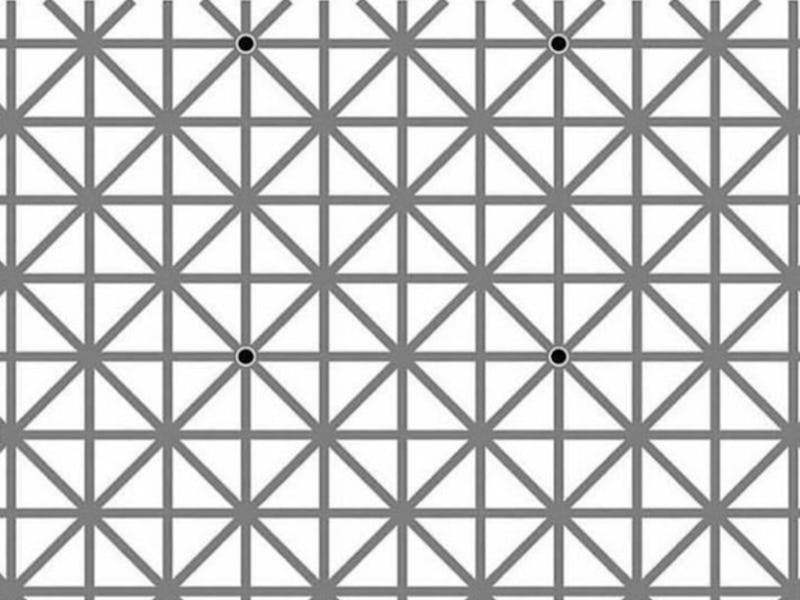Viral Hermann Grid Optical Illusion Will Drive You Crazy Trying to Beat it
All 12 dots are there, we promise.

The brain is a powerful organ. Because of it, we can empathize with others, fall in love, make memories, and do all of the things that make up our lives. Despite these capabilities, the brain is still easily tricked. Case in point: A variant of the optical trick called the Hermann grid illusion has stumped most folks since it was posted Wednesday on Reddit.
This optical illusion has actually been tricking human’s brains for a long time: Invented in 1870 by the German physiologist Ludimar Hermann, the original Hermann grid illusion consists of rows of dark squares and white spaces between them. In the white spaces, you’ll likely see small squares of gray — that’s the illusion. The viral grid posted on Reddit — which also went viral in September 2016 after it was posted on Twitter — is a bit different, featuring gray crisscrosses on a white background, with twelve black dots scattered throughout.
But there’s no way you’ll see all the dots at once.
The image above comes from a 2000 study on the Hermann grid published in the journal Perceptions. Scientists from the Laboratory of Statistical Physics at the University of Oregon explain that we can’t see the 12 dots at the same time because of a phenomenon that occurs in our eyes:
When the white disks in a scintillating grid are reduced in size, and outlined in black, they tend to disappear. One sees only a few a few of them at a time, in clusters which move erratically on the page. Where they are not seen, the grey alleys seem to be continuous, generating grey crossings that are not actually present. Some black sparkling can be seen at those crossings where no disk is seen.
They call this process the “extinction effect” — because the white circles circumference the black dots where the grey alleys meet, there’s less contrast between the black and grey images and the brain becomes tricked into thinking the dot is actually lighter. The Verge explains that “this happens because retinal ganglion cells in the sheet of tissue called the retina at the back of the eye detects contrast.”
It doesn’t help that our peripheral vision isn’t great. As you search the optical illusion for all twelve dots, the other dots become fuzzy as you place your focus on just one. Meanwhile, the grid encourages the brain to fill in the space that it’s not actually perceiving which just more grid shapes — not dots.
That leaves you scrambling to see something that’s in plain sight. If you enjoy that feeling in cognitive ineptness, we have good news: There are a bunch more scientifically certified optical illusions out there waiting to drive you crazy.